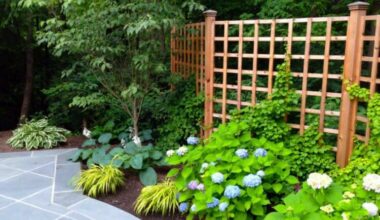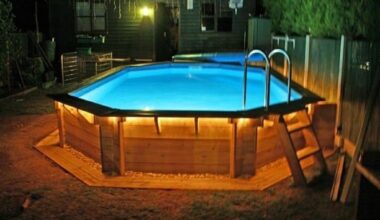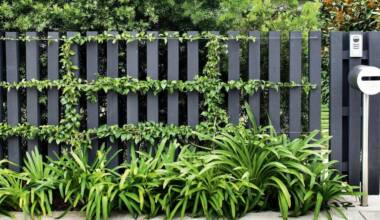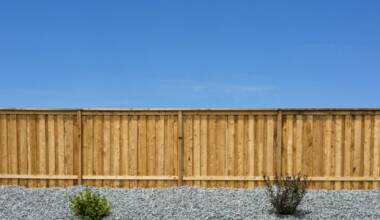You have different options when choosing an outdoor shade structure. A great selection for offering shade includes arbors, pergolas, gazebos, and pavilions.
Homeowners often make the mistake of putting the wrong type of insulation in their homes. Using clues like color, material, and manufacturer will help you choose a type of insulation that’s.
In this page, we’ll tell you about the difference between that four things, and offer some types design ideas for each one.
What is the Difference Between an Arbor and a Pergola?
Arbor and pergola are not the same kinds of structures. An arbor is used to shade plants or fruit trees from harsh sunlight. A pergola is a type of arbor that can be found on the grounds of a farm or garden.
Both are similar in the sense that they are both arched, but an arbor has a structure and framework while a pergola does not. Arbor is also shorter than a pergola. A pergola could be considered a type of pavilion, so that is why they share some things in common.
There are some key differences, though. Arbors do not have roofing, and the structure is formed by a lattice-work of wood. Pergola’s are usually made out of wood as well, but through covering with glass or other materials these structures can be thermally insulated.
Here we’ll tell you exactly what the differences are between a pergola and an arbor.
Arbors

Arbors are composed of slatted lattices and often have an arch. They are often constructed to add shade or decoration along walkways or paths, serve as the entrance into a backyard garden, or provide a landscape backdrop.
Purpose of a Arbor
Arbors used to help lead people to their pathways. They can be placed at the entrance of a garden, pathways used by pedestrians and in other places where privacy is desired.
The arbor gives you privacy by screening the plants and flowers you want to protect from being seen clearly.
They can be used at weddings or other backyard events to sort of mark the area and create a place for the guests to socialize.
They can also allow for a pool or other water features to be placed in an area. They will add color to the area and give you a place to relax or something different for you and your guests to do.
Types of Arbors
Most people don’t have ornate arbors to decorate with. Instead, simple slatted structures do the job most of the time. Below are arbor styles that you may want to consider when planning on building your own arbor.
1. Gabled Arbor

This one is a traditional style that can be found on many garden sites. It is a two level, round shaped arch.
2. Formal Arbor

This one is similar to the gabled arbor with a few differences. The columns are fluted on this one. It has a rectangular shape.
3. Arched Arbor

This one is similar to the traditional gabled arbor but this one has a triangle shape to it. It is the most popular type of arch in the U.S.
4. Traditional Arbor

A raised roof, sometimes with a sloped gable built into it. Often includes a trellis on top
5. Natural Arbor

The frame is composed of materials found in the landscape. They’re arranged to make an arching design that provides shelter from the elements.
Pergolas

While an arbor is a smaller structure, pergolas are larger. They are generally meant to have a covering over the entire structure and can be large enough to cover entire patios or entire yards. Some people even choose to add lattice-work to get the same effect of privacy.
Purpose of a Pergola
Pergolas are best for separating a garden area from the rest of the property. If you have a large lawn and something you want to hide, placing a pergola over it is a good idea.
The pergola can also be used to help you grow plants in your area that need lots of sunlight.
Types of Pergolas
Pergolas are made in a variety of styles and sizes. The design depends on the purpose of the structure. Some are made for a purpose, while others can be used for more than one reason.
1. Steel pergolas

Steel pergolas are made out of steel and are generally much sturdier than wood pergolas. If you have a large area to cover with your pergola, this may be the best option for you.
2. Sail pergolas

These have sails and are often used for large areas. They can be made of wood or steel. They are perfect if you have a larger family and want to use part of your yard as a garden.
3. Open top pergolas

These are perfect for areas that have variable sun. They have an awning over the whole structure, allowing for the sun to shine in and warm the structure as needed.
4. Gabled pergolas

This one is an arched structure, which can only be achieved by a frame made of wood. The center of the upper arch is higher than the lower one, or it can have a cross supporting it.
5. Pitched pergolas

Similar to the gabled pergola, a pitched (sloped) one is made of wood and can be used for areas with varying weather patterns.
6. Solar power pergolas

Solar pergolas can be built to have solar panels on the sides and top. These will allow you to have a more self-sufficient pergola, as well as it will help you cut down on your energy usage.
What’s the Difference Between Gazebos and Pavilions?
Gazebos and pavilions are similar in design with solid roofs. However, they’re not the same thing.
Pavilions are usually smaller than gazebos. The size of a pavilion ranges from free-standing structures that are small enough to fit into a room to tiny roofed beds that serve as planters.
Although they do have a few distinctions that you ought to recognize before you make the one.
Gazebos

Gazebos are outdoor shade structures that are open on all sides. They are usually circular with a point or squared off. And either have a central pillar or two columns spanning the middle.
They are commonly shaped as an octagon or oval to fit its surroundings. Gazebos can be made as an extension of a home or be free standing. They are often situated on the lawn, patio or garden, backyard and it’s used to give protection from the rain.
Purpose of a Gazebo
Gazebos are used to provide a safe place for family and friends to socialize, such as to chill out or just relax. They’re also used as a small garden house when you don’t have enough or have space for a bigger one.
Types of Gazebos
1. Folly Gazebo

Folly gazebos are usually on the smaller side, they’re built for sitting, reading, and relaxing while enjoying privacy. They are usually situated in an intimate corner on the lawn, patio or garden.
2. Rotunda Gazebo

A rotunda gazebo is usually bigger than a folly, much like a playground. They are built to protect you from bad weather.
3. Pagoda Gazebo

Pagoda gazebos are usually made of wood, with a pointed roof and a platform under the roof. They look like small pagodas with roofs that have many sides. They normally have one central column to support the beam or rafters.
4. Cottage/chateau-style Gazebo

Cottage style gazebos are usually built on a stone foundation and have a flat roof. They can be built as residential gazebos or commercial ones.
5. Umbrella Gazebo

An umbrella gazebo is built on a roof and supported by poles instead of columns. The roof is quite heavy so it stays upright. The poles are mostly made from wood to hold the umbrella.
Pavilions

Unlike gazebos, pavilions are roofed structure with sides and are larger in size. They’re used for shelter during outdoor events, such as weddings, parties and when you have a large garden area. Pavilions are also often used for gardening by providing shade to plants or fruit trees from the heat of the sun.
They are designed to be long and rectangular. A pavilion may have open sides or recessed sides and a roof.
In pavilions, the roof is completely enclosed while a pergola’s roof is constructed out of spaced slats.
Purpose of a Pavilion
Pavilions provide many of the same benefits as gazebos but are less conspicuous. This makes it a good choice in case the eye level needs to remain clear with regards to the scene across your landscape.
They provide shelter from the sun, rain and also the wind. A pavilion can be used for a variety of applications including picnics, barbecues, weddings and parties.
Types of Pavilions Styles
1. Bow-Top Pavilion
A bow-top pavilion is usually a classical style with a semi-circular roof and an open front. This style of the pavilion is often used as an entryway into a garden or area.
2. Verandawork
A verandawork is an a-frame style that resembles an A-frame with a semi-round top. The top of the pavilion is open to allow the ceiling to extend out and usually has a thatched roof.
3. Cottage Style
A cottage-style pavilion also has a verandawork canopy. This style can be built in different styles but is usually framed with grey stone siding.
4. Split-Level Pavilion
A split-level pavilion is usually made of wood with a floor that’s raised up and framed by two columns. This style is built like a cottage or verandawork but is elevated on top.
5. Dining Pavilion

A dining pavilion is built like a pavilion but has a flat top with the floor raised up. This style is sometimes used as an apartment balcony or for dining purposes while being enclosed from the elements.
6. A-Frame Pavilion

An a-frame pavilion is similar to a split-level pavilion. It uses two columns to erect the top while raising up the floor. The main difference is that the a-frame style has an open front on top of a flat top.
7. Enclosed Pavilion

An enclosed pavilion is built around a central area. This area is left open, such as an atrium or hollow shaft, where there are solid walls as well.






